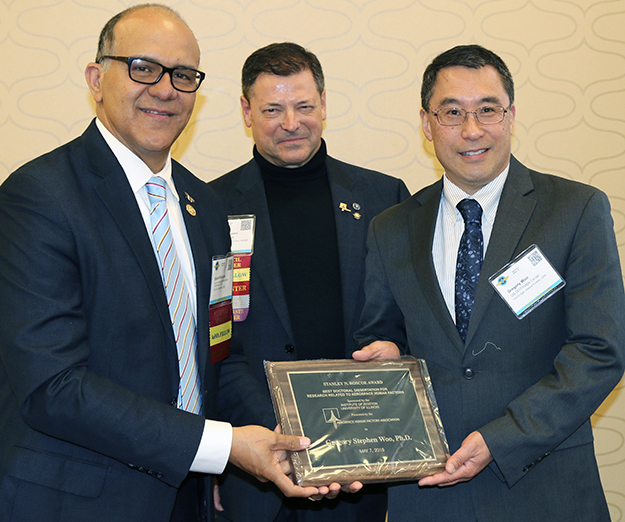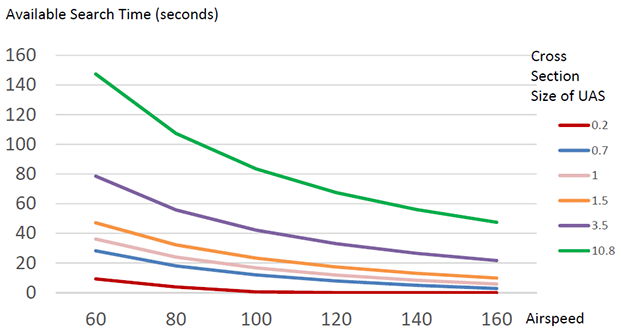Gregory Woo Receives Stanley N. Roscoe Aviation Human Factors Award for Paper on Visual Detection of Small Drones
Gregory Woo, PhD, received the 2018 Stanley N. Roscoe Award from the Aerospace Human Factors Association (AsHFA) on May 7, 2018. Woo is chief of the U.S. DOT Volpe Center’s Aviation Systems Engineering Division. AsHFA presents the Stanley N. Roscoe Award for the best doctoral dissertation written on a research topic related to aerospace human factors.

“Stanley Roscoe was, throughout the 20th century, one of the top pioneers in flight deck design, and AsHFA is a prestigious organization whose membership includes many well-known leaders in the aerospace human factors field, so to receive this award was a wonderful honor and a career highlight for me,” Woo said.
Woo’s dissertation, Visual Detection of Small Unmanned Aircraft: Modeling the Limits of Human Pilots, modeled the ability of human pilots in manned aircraft to visually detect small, unmanned aircraft in time to avoid a collision. The study drew on the mechanics of the human eye and previous research on how people view distant objects to define the limits of human visual search abilities.
Woo’s work included a new simulation model tailored to visual detection of small, unmanned aircraft. The study indicated that manned-aircraft pilots cannot rely on see-and-avoid when operating near small, unmanned aircraft.
In his dissertation, Woo discusses how concepts such as lighting, coloration, and relative motion do little to consistently improve the visibility of small unmanned aircraft. He concludes that because small, unmanned aircraft continue to appear in airspace where they do not belong, regulators and the industry need to accelerate developing and deploying alternative methods for collision prevention between small unmanned aircraft operations and manned aircraft.
The criteria for selecting the Stanley N. Roscoe award winner include:
- Significance of the problem and innovativeness of the approach
- Review of related research
- Effectiveness of the research design and analysis
- Interpretation of results
- Theoretical and practical value of the work
- Clarity of writing
Aircraft Identification and Reaction Time
The chart below depicts the cumulative minimum time needed to see and react to a collision hazard in order to avoid the actual collision.
|
Event |
Time (seconds) |
Cumulative Time (seconds) |
|
See object |
0.1 |
0.1 |
|
Recognize aircraft |
1.0 |
1.1 |
|
Recognize collision course |
5.0 |
6.1 |
|
Decide on action |
4.0 |
10.1 |
|
Muscular reaction |
0.4 |
10.5 |
|
Aircraft lag time |
2.0 |
12.5 |
Adapted from the Australian Transport Safety Bureau, 1991, which based its conclusions on FAA Advisory Circular 90-48-C. The original data were derived from military research studies. (Table 5, page 77 of Woo’s dissertation.)
The chart below shows how much search time a manned aircraft pilot has when a drone theoretically becomes visible to the naked eye. For a typical hobby or camera-carrying drone with a profile of 0.7 square feet, most pilots have far less than 20 seconds to see and avoid the drone. Many pilots will be too close to avoid a drone of that size by the time it becomes visible.

Read Woo’s full dissertation, Visual Detection of Small Unmanned Aircraft: Modeling the Limits of Human Pilots.
